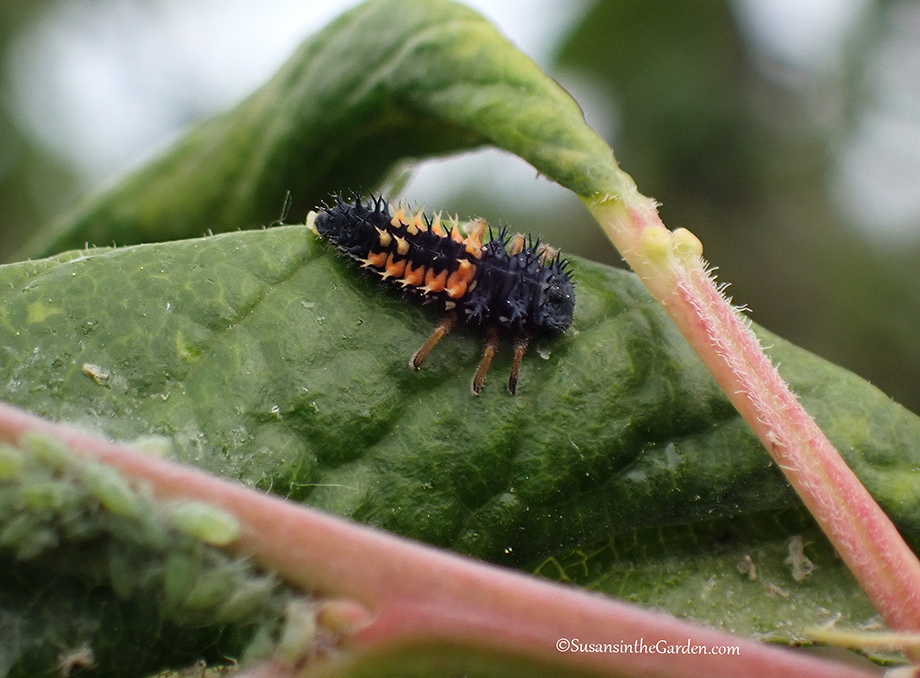Where are the Beneficial Insects?

On May 25, I posted a short video about the masses of aphids on a lupine plant. At the time, I told folks not to worry because the beneficial insects would soon come to the rescue. Boy, was I wrong!
Take a close look at the photo to the left. All of those tiny things are aphids! Yikes.
Many gardeners would prefer to spring into action when they come face to face with hordes of aphids. But did you know most beneficials love feasting on aphids? You’ll see examples of them in the list below.
Beneficial insects that eat aphids
- Assassin bugs
- Big-eyed bugs
- Damsel bugs
- Ground beetles
- Hoverfly larvae
- Lacewing adults and their larvae
- Ladybugs
- Long-legged flies
- Minute pirate bugs
- Parasitic wasps
- Praying mantids
- Robber flies
- Snakeflies
- Soldier beetles
- Spiders
Isn’t that an amazing list? A healthy environment requires a balance of predators and prey. I know that’s a hard thing to accept at times. We just want “the good bugs,” right?
In normal years, nature works the way it’s supposed to and aphid issues are resolved without any interventions from us. This year has not been normal, though. Read on to find out what happened to us this spring.
Unfortunately, my goal of letting nature take its course didn’t go according to plan. The aphid problem continued to get worse. I kept telling myself to just be patient. I did occasionally see a ladybug or a green lacewing, but not in the quantities the problem warranted.
Our winter here in Spokane, Wash., was a challenging one. Ordinarily, we get about 46″ of snow, which provides a layer of insulation for our plants. It also insulates beneficial insects that are overwintering in leaf litter. This winter, we had a cold snap that likely killed a huge percentage of those bugs.
There I was, waiting for the good guys to come to the rescue, unaware there weren’t enough to help. The good news is that we are starting to see more of them in the garden, so that’s encouraging. Let’s look at the types of things you can do when you’re dealing with huge populations of aphids.
Organic methods for controlling aphids
Start with the easiest method: spray them off the plants with a jet of water from your hose. Scientists reassure me they won’t have the energy to climb back up. (I hope they’re right!)
Crush some of the aphids with your fingers. That releases a natural compound that attracts beneficial insects. (Yeah, I know, we don’t have many yet but it’s a start. And in normal years, that should help a lot.)
What if the aphids are on susceptible vegetables such as cabbage family crops? These include arugula, broccoli, cabbage, kale, kohlrabi and turnips. To prevent this problem, always cover these crops as soon as you plant the seeds and seedlings. We use either floating row cover or agricultural insect netting for this. I have a video that compares the types of row covers.
Avoid using a lot of nitrogen fertilizer. Why? Nitrogen promotes leafy, green growth and guess what aphids love? Yup, leafy green growth.
Apply diatomaceous earth, horticultural oil, insecticidal soap*, Neem oil* or plant extracts to the foliage. But the most important thing to know about those with an asterisk is that they are toxic to pollinators. Never use them on or near flowers!
I hope you’ll find this post helpful.


